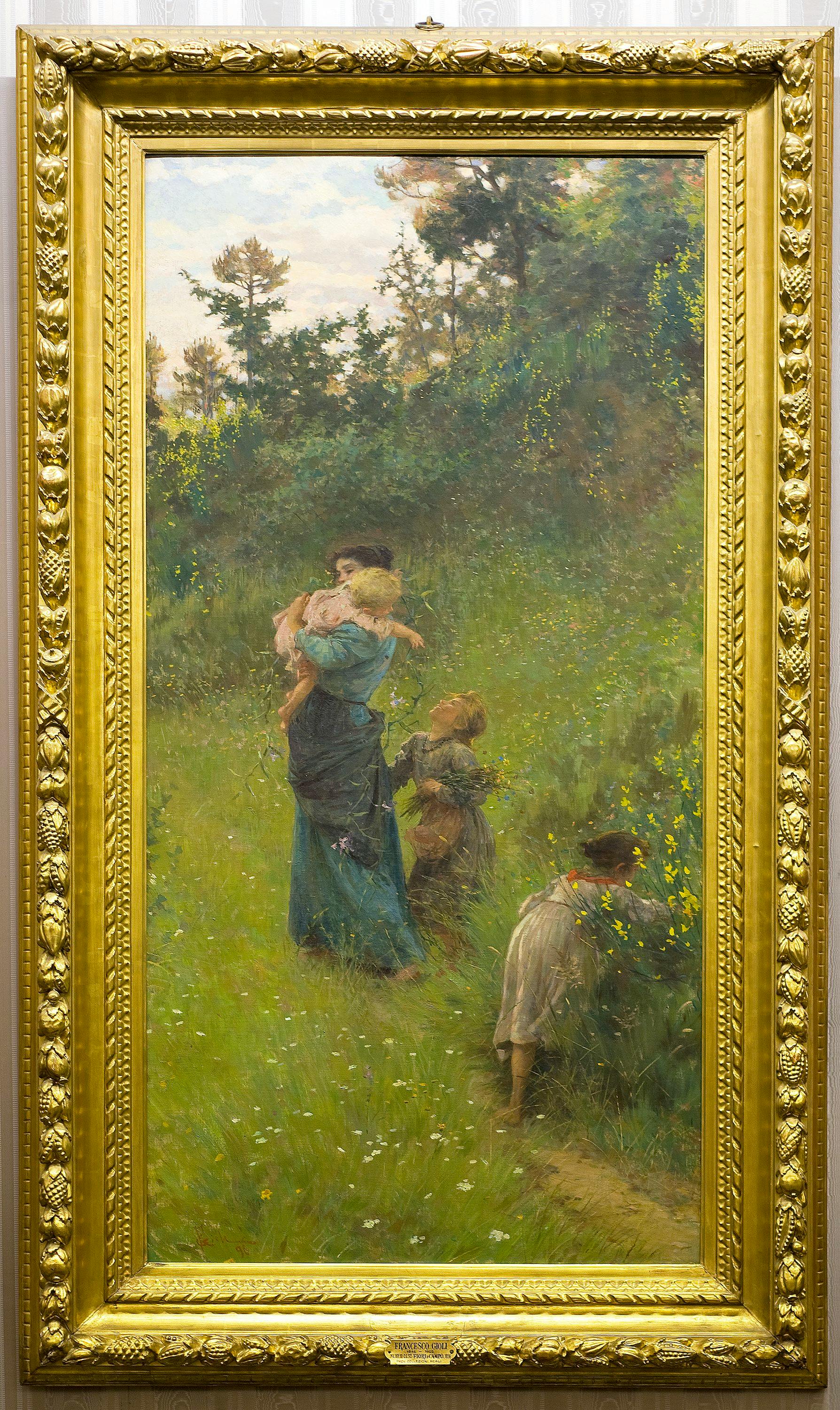Field flowers
Francesco Gioli (San Frediano a Settimo di Cascina, Pisa 1846 - Florence 1922)
The work was presented in 1896 at the Florentine exhibition entitled Art and Flower Festival. The way Gioli approached the theme, combining feelings of motherly prosperity with the fertile reawakening of nature in spring, was grasped and appreciated by most critics of the time. The remaining comments reversed these peculiarities in a negative way, calling this work “monotonous and too moderate”. Gioli chose an unusual format for this subject and used the diagonal line not only to enhance the upward movement of the characters, but also to bring the observer’s gaze to the dynamic interplay between mother and children. Following the direction of the path, the family group closes with a fourth figure, a little girl not far away, busy picking a few tufts of lush broom. Gioli recounts these fragments of everyday life in great detail, studying the colours of the clothes, balancing the tones, making the context in which the characters move teem with life. The broom flowers and daisies, in the thickening of the vegetation, turn from patches of colour into points of light. At the same time, the shadowy silhouettes of the trees stand out against the changing sky, silent witnesses to the family’s cheerful passing.
This painting exemplifies Gioli’s mature period, when his adherence to the Macchiaioli movement is complete. In addition to frequenting the group of artists - both in Florence and in Castiglioncello, at the home of Diego Martelli (1839-1896) - Gioli’s stay in Paris in 1875 with Giovanni Fattori (1825-1908), Egisto Ferroni (1835-1912) and Niccolò Cannicci (1846-1906) was fundamental in his life.
Gioli's debut, however, was very different. His training was academic and his early works focused on themes dear to historical romanticism. His artistry was immediately appreciated, although far from the lively spirit exemplified in this painting. However, it is thanks to that fruitful education that his Macchiaioli breakthrough had such an impact. The artist changed genres, refined his technique, obtained insight from Italian and foreign colleagues, but never forgot the important lessons learnt from the masters: Annibale Marianini (1814-1863) at the Pisa Academy, Antonio Ciseri (1821-1891) and Enrico Pollastrini (1817-1876) at the Florentine Academy.
He was very active and successfully participated in numerous exhibitions in Italy and Paris.
Purchased by Umberto I in the same year as its execution, the painting was later donated to the Pitti Palace Modern art gallery, the place designated to house the nascent collection of contemporary works of art.
